ABSTRACT
The purpose of this study was to compare and to evaluate the combination use of 5 kinds of dentin adhesive systems and 5 kinds of composite resins using micro-shear bond test. Five adhesive systems (Prime & Bond NT (PBN), Onecoat bond (OC), Excite (EX), Syntac (SY), Clearfil SE bond (CS)) and five composite resins (Spectrum (SP), Synergy Compact (SC), Tetric Ceram (TC), Clearfil AP-X (CA), Z100 (Z1)) were used for this study (5 × 5 = 25group, n = 14/group). The slices of horizontally sectioned human tooth were bonded with each bonding system and each composite resin, and tested by a micro-shear bond strength test. These results were analyzed statistically. The mean micro-shear bond strength of dentin adhesive systems were in order of CS (22.642 MPa), SY (18.368 MPa), EX (14.599 MPa), OC (13.702 MPa), PBN (12.762 MPa). The mean bond strength of self-etching primer system group (CS, SY) in dentin was higher than that of self-priming adhesive system groups (PBN, EX, OC) significantly (P<0.05). The mean bond strength of composite resins was in order of SP (19.008 MPa), CA (17.532 MPa), SC (15.787 MPa), TC (15.068 MPa), Z1 (14.678 MPa). Micro-shear bond strength of SP was stronger than those of other composite resins significantly (P < 0.05). And those of TC and Z1 were weaker than other composite resins significantly (P < 0.05). No difference was found in micro-shear bond strength of composite resin in self-etching primer adhesive system groups (CS, SY) statistically. However, there was significant difference of micro-shear bond strength of composite resin groups in self-priming adhesive systems group (PBN, EX, OC). The combination of composite resin and dentin adhesive system recommended by manufacturer did not represent positive correlation. It didn’t seem to be a significant factor.
Go to : 
References
1. Buonocore MG, Rochester NY. Principle of adhesive retention and adhesive restorative materials. J Am Dent Assoc. 67:382–391. 1963.
2. Asmussen E, Peutzfeldt A. Influence of UEDMA, BisGMA and TEGDMA on selected mechanical properties of experimental resin composites. Dent Mater. 14:51–56. 1998.

3. Kugel G, Ferrari M. The Science of bonding : From first to sixth generation. J Am Dent Assoc. 131((June)):20–25. 2000.
4. Gallo JR, Comeaux R, Haines B, Xu X, Burgess JO. Shear bond strength of four filled dentin bonding systems. Oper Dent. 26:44–47. 2001.
5. Fanning DE. Effect of a filled adhesive on bond strength in three dentianl bonding system. General Dentistry. 43(3):256–262. 1995.
6. Sano H, Takatsu T, Ciucchi B, Horner JA, Matthews WG, Pashley D. Nanoleakage : Leakage within the Hybrid Layer. Oper Dent. 20:18–25. 1995.
7. Li H, Burrow MF, Tyas MJ. Nanoleakage patterns of four dentin bonding systems. Dent Mater. 16:48–56. 2000.

8. Miyazaki M, Hinoura K, Onose H, Moore BK. Effect of filler content of light-cured composites on bond strength to bovine dentine. J Dent. 19:301–303. 1991.

9. Asmussen E. Factors affecting the quantity of remaining double bonds in restorative resin polymers. Scand J Dent Res. 90:490–496. 1982.

10. Ferracane JL. Status of Research on New Fillers and New resins for dental composites. Advanced Adhesive Dentistry 3rd International Kuraray Symposium 3-4 December. 3–29. 1999.
11. Pashley DH, Sano H, Ciucchi B, Yoshiyama M, Carvalho RM. Adhesion testing of dentin bonding agents : A review. Dent Mater. 11:117–125. 1995.
12. Watanabe LG, Marshall GW, Marshall SJ. Variables influence on shear bond strength testing to dentin. Advanced Adhesive Dentistry 3rd International Kuraray Symposium 3-4 December. 75–90. 1999.
13. Sano H, Shono T, Sonoda H, Takatsu T, Ciucchi B, Carvalho R, Pashley DH. Relationship between surface area for adhesion and tensile strength-Evaluation of a micro-tensile bond test. Dent mater. 10:236–240. 1994.
14. Shimada Y, Antonucci JM, Schumacher GE, McDonough WG, Tagami J. Effects of regional tooth structure and sectioning orientation on micro-shear bond strength. Advanced Adhesive Dentistry 3rd International Kuraray Symposium 3-4 December. 91–103. 1999.
15. Erickson RL. Influence of test parameters on dentin bond strength measurements. Dent Res. 68:374 Abst. No. 1543. 1989.
16. Miyazaki M, Oshida Y, Onose H. Dentin bonding system : Factors affecting bond strength. Modern Trends in Adhesive Dentistry Proceedings of the Adhesive Dentistry Forum ‘99 in Tsurumi, Yokohama, Japan, Feb 20. 56–71. 1999.
17. Elick JD, Gwinnett AJ, Pashely DH, Robinson SJ. Current concepts on adhesion to dentin. Crit Rev Oral Bio Med. 8:306–335. 1997.
18. Finger WJ, Fritz UB. Resin bonding to enamel and dentin with one component UDMA/HEMA adhesives. Eur J Oral Sci. 105:183–186. 1997.
19. Leirskar J, ilo G, Nordb H. In vitro shear bond strength of two resin composites to dentin with five different dentin adhesives. Quintessence Int. 29:787–729. 1998.
20. Nakabayashi N. The promotion of adhesion by the infiltration of monomers into tooth states. J Biomed Mat Res. 16:265–273. 1982.
Go to : 
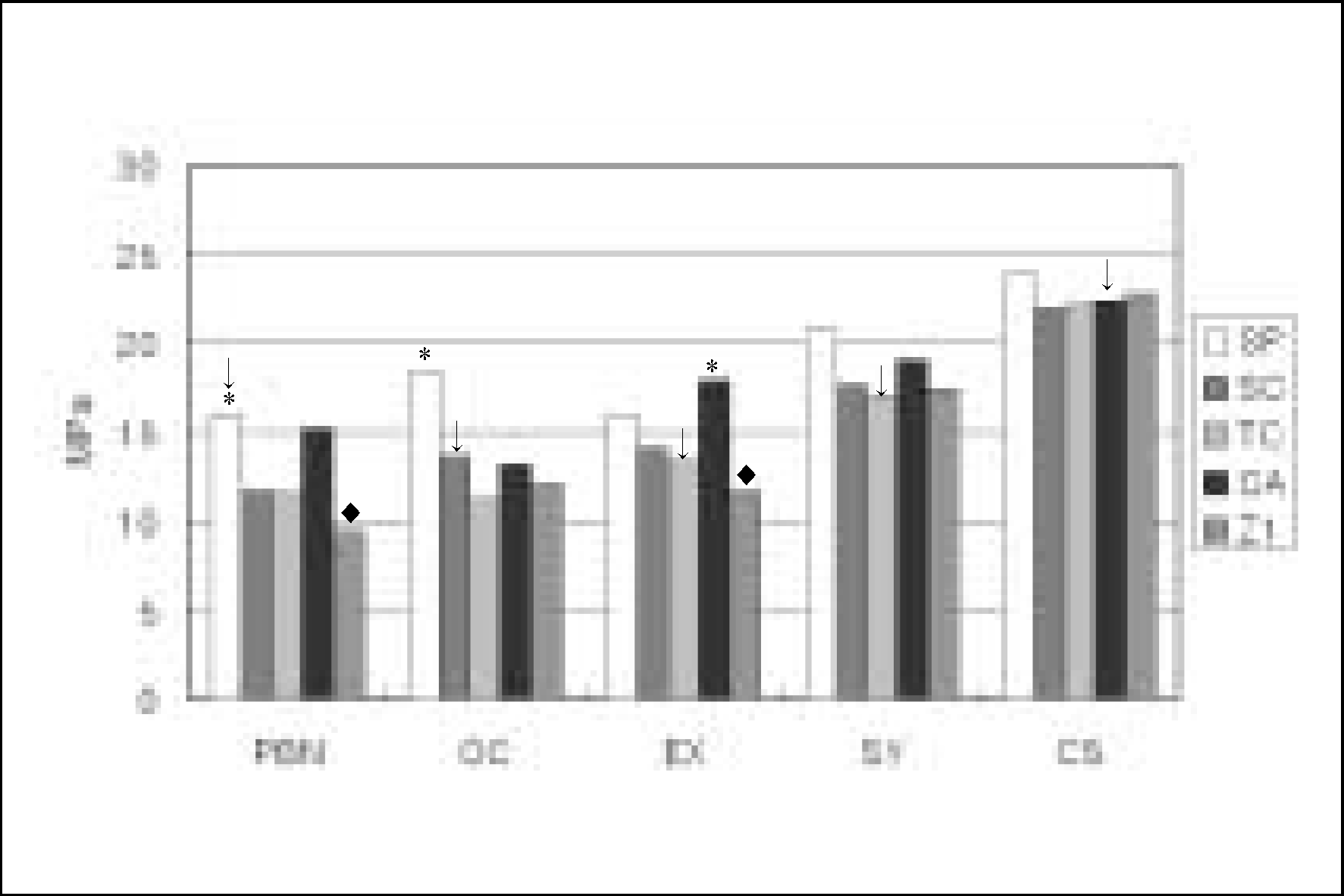 | Figure 4.Micro-shear bond strength of composite resins in each adhesive system. (*, ◆ : statistical significance, ↓ : same manufacturer) |
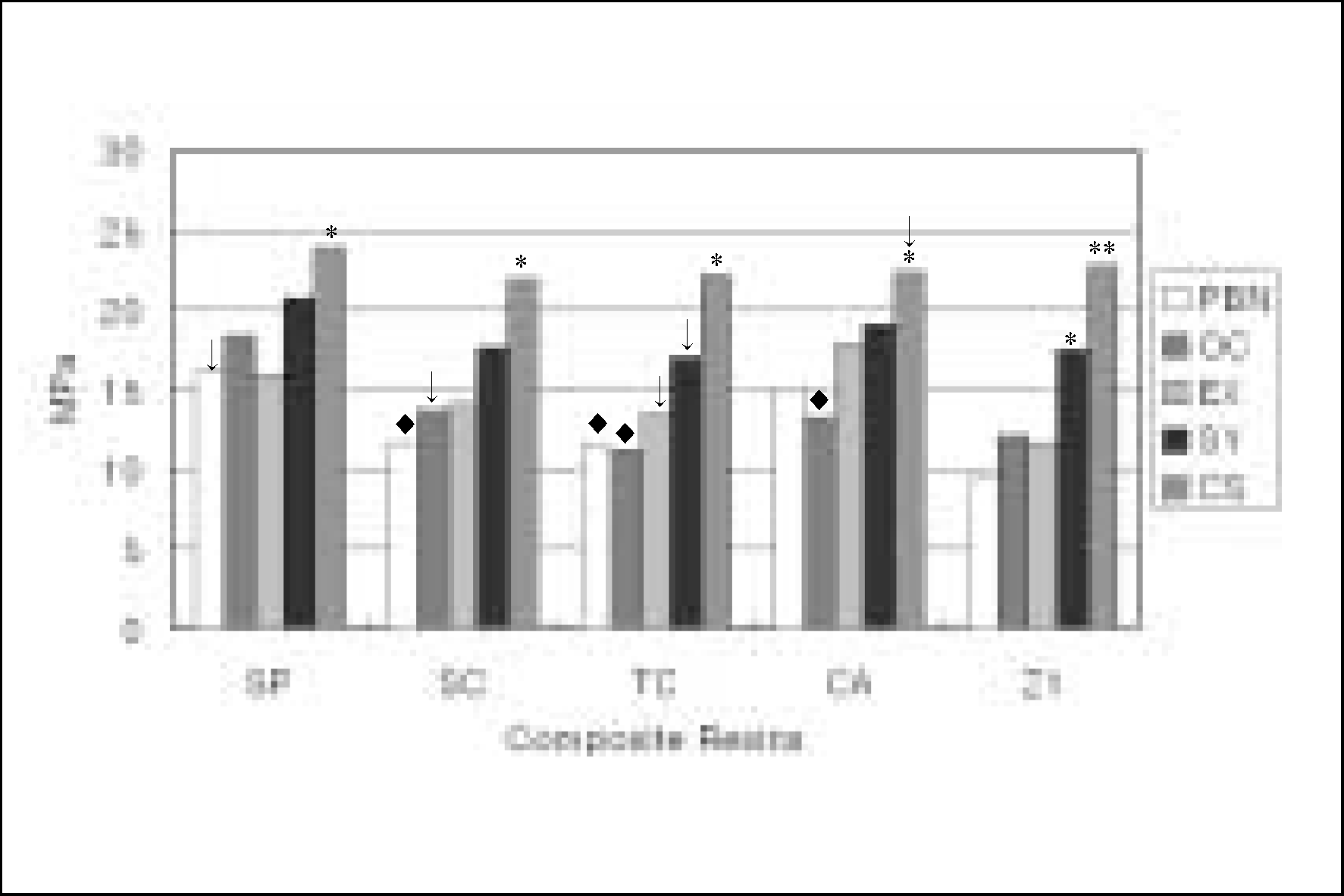 | Figure 6.Micro-shear bond strength of dentin adhesive system in each composite resin. (*, ◆ : statistical significance, ↓ : same manufacturer) |
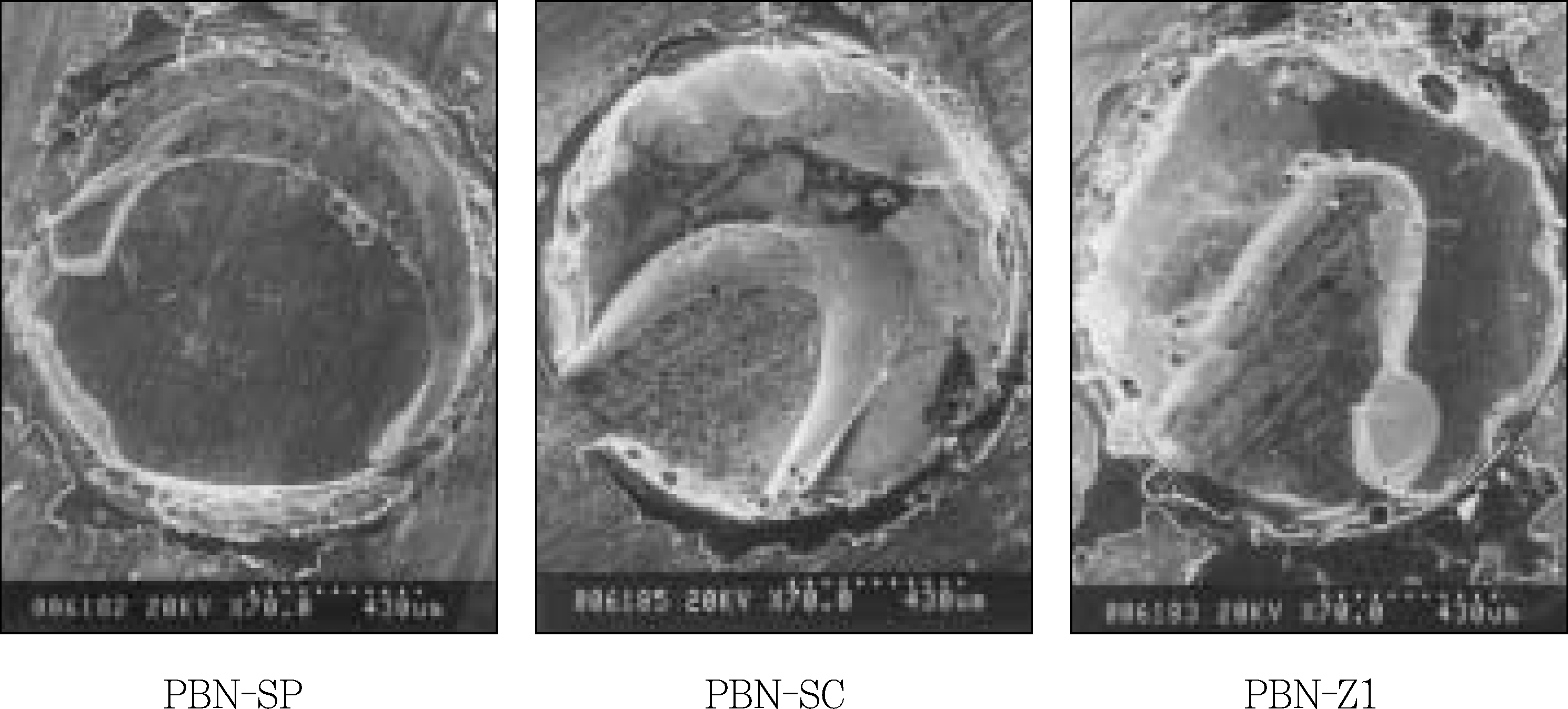 | Figure 7.SEM observations of fracture site of Prime and Bond NT group. (*, ◆ : statistical significance, ↓ : same manufacturer) |
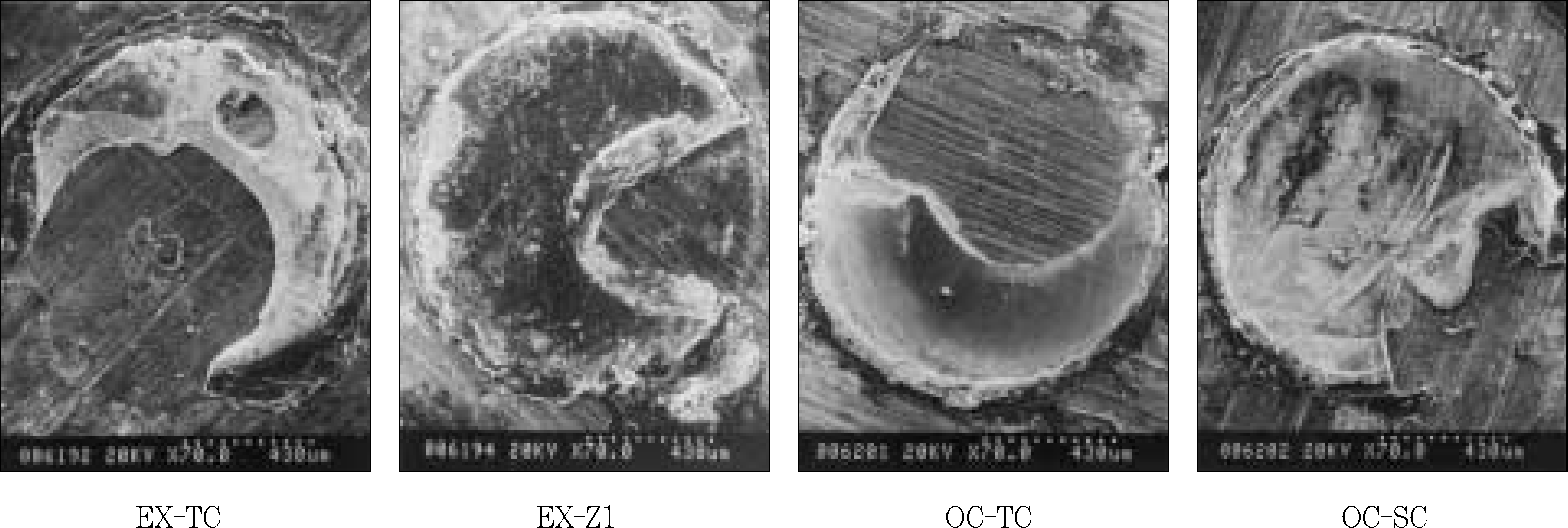 | Figure 8.SEM observations of fracture site of Excite and Onecoat bond group. (*, ◆ : statistical significance, ↓ : same manufacturer) |
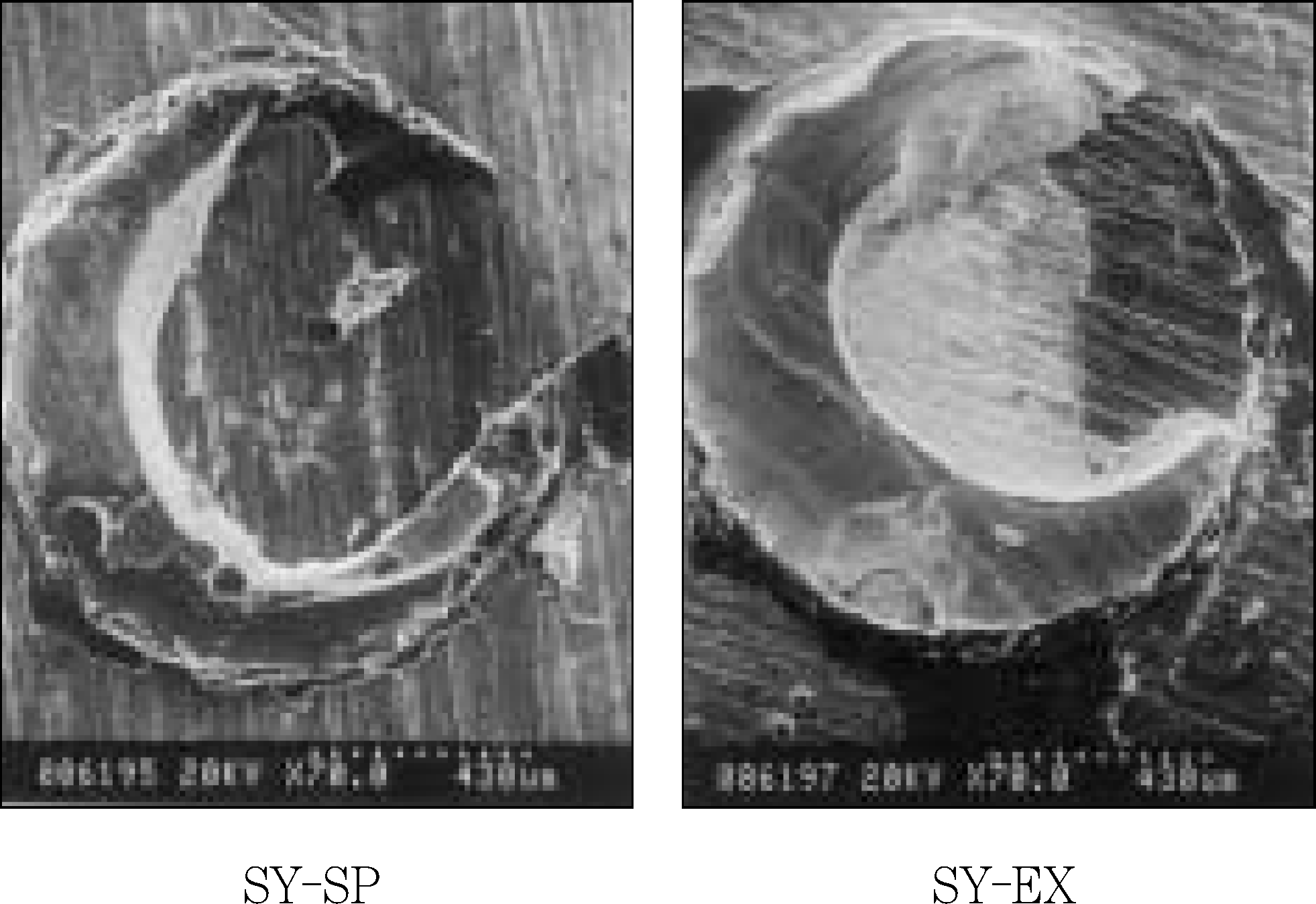 | Figure 9.SEM observations of fracture site of Syntac group. (*, ◆ : statistical significance, ↓ : same manufacturer) |
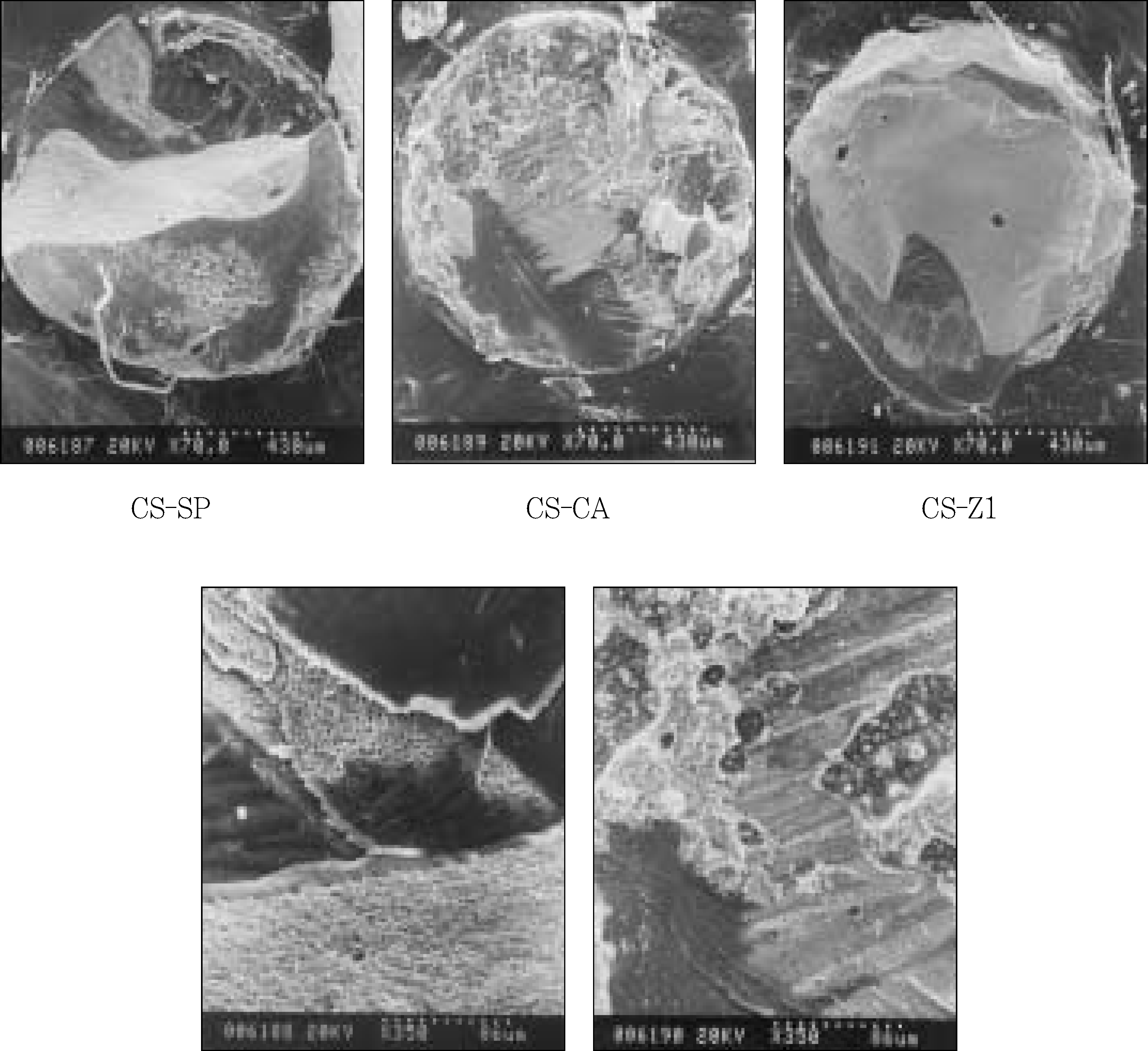 | Figure 10.SEM observations of fracture site of Clearfil SE bond group. (*, ◆ : statistical significance, ↓ : same manufacturer) |
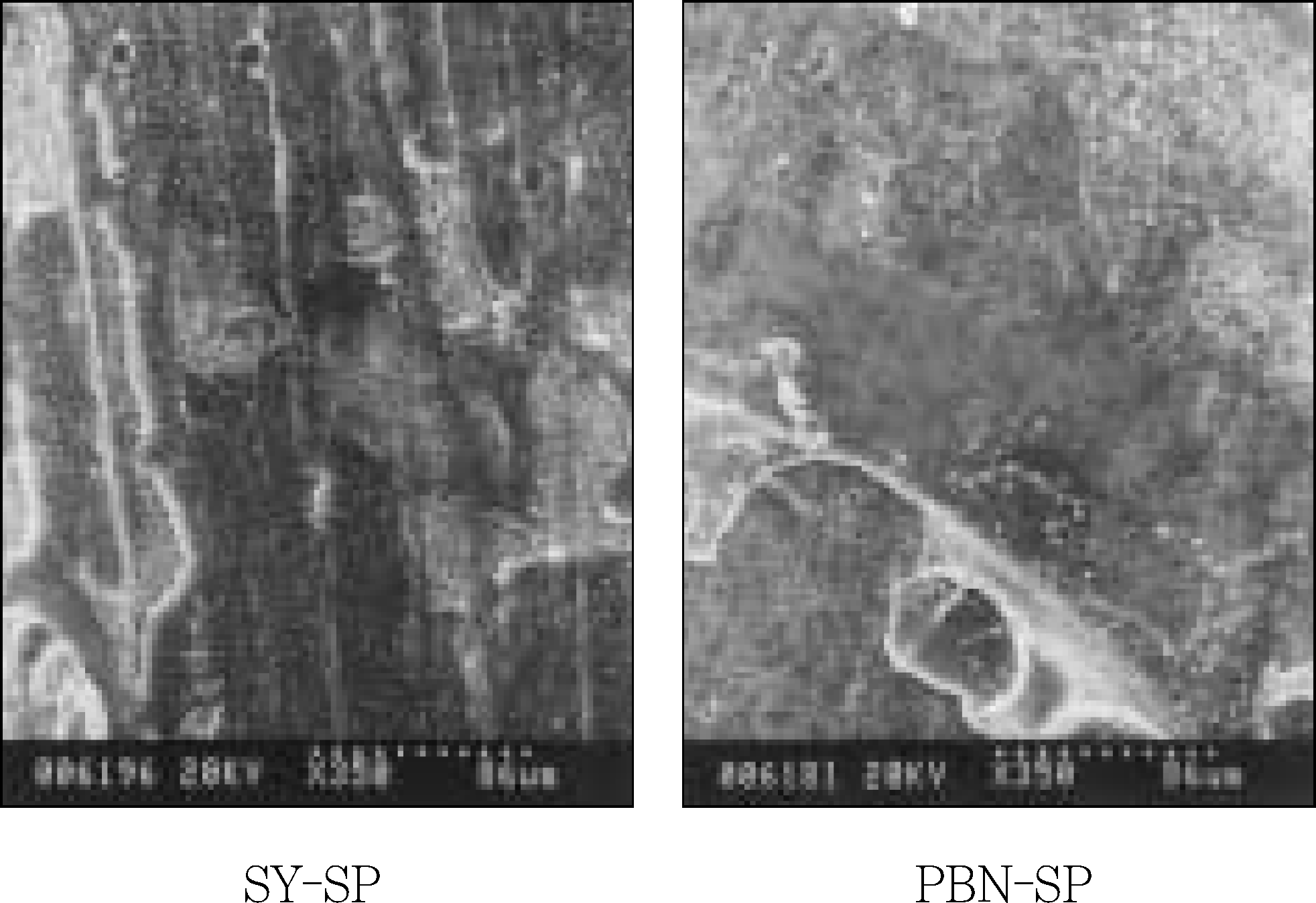 | Figure 11.Comparison of fracture pattern of self-etching primer adhesive system and self-priming adhesive system. (*, ◆ : statistical significance, ↓ : same manufacturer) |
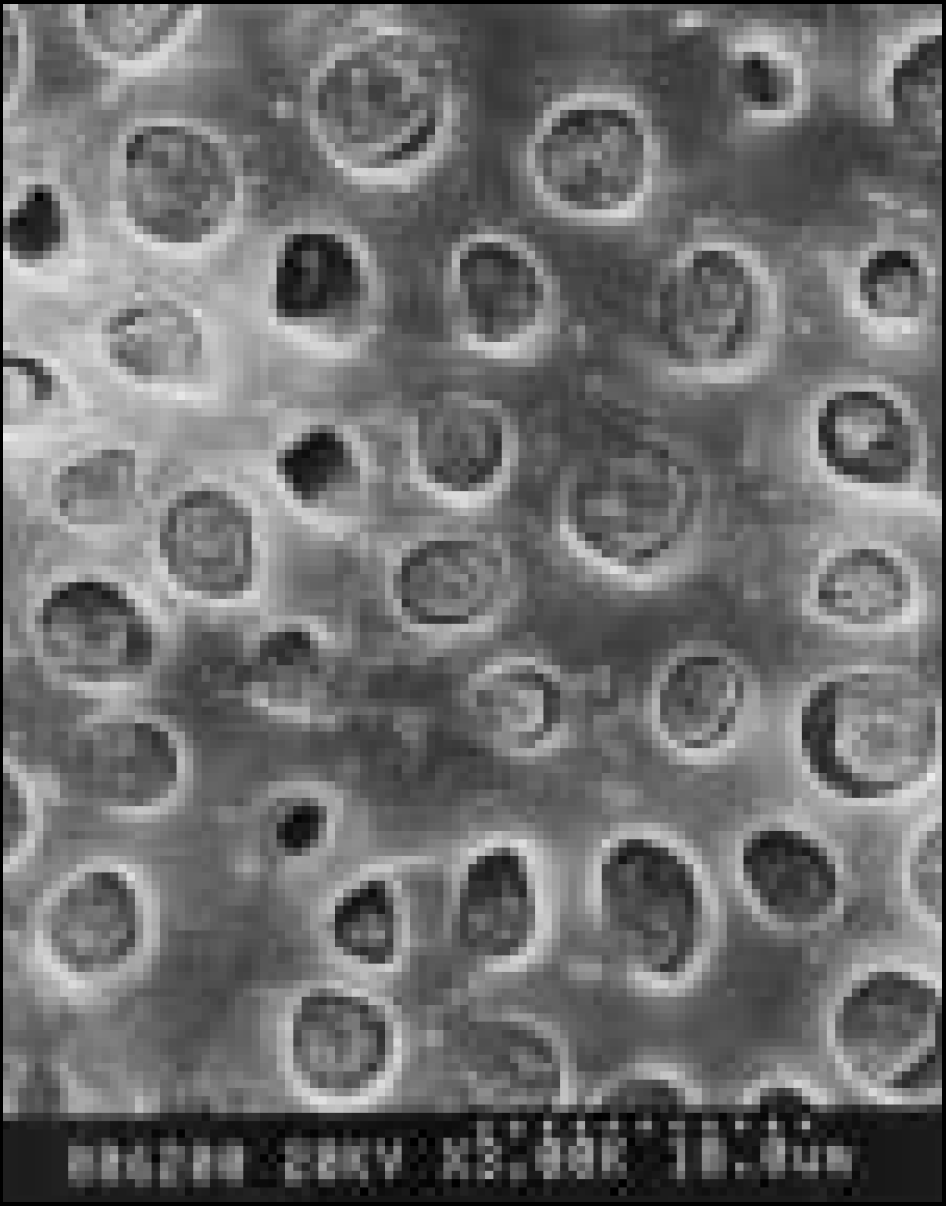 | Figure 12.Dentinal tubule orifices of fracture site(OC-TC). (*, ◆ : statistical significance, ↓ : same manufacturer) |
Table 1.
Dentin adhesive systems
Table 2.
Composite resins
Table 3.
Experimental groups
Table 4.
Overall view of micro-shear bond strength (㎫)




 PDF
PDF ePub
ePub Citation
Citation Print
Print


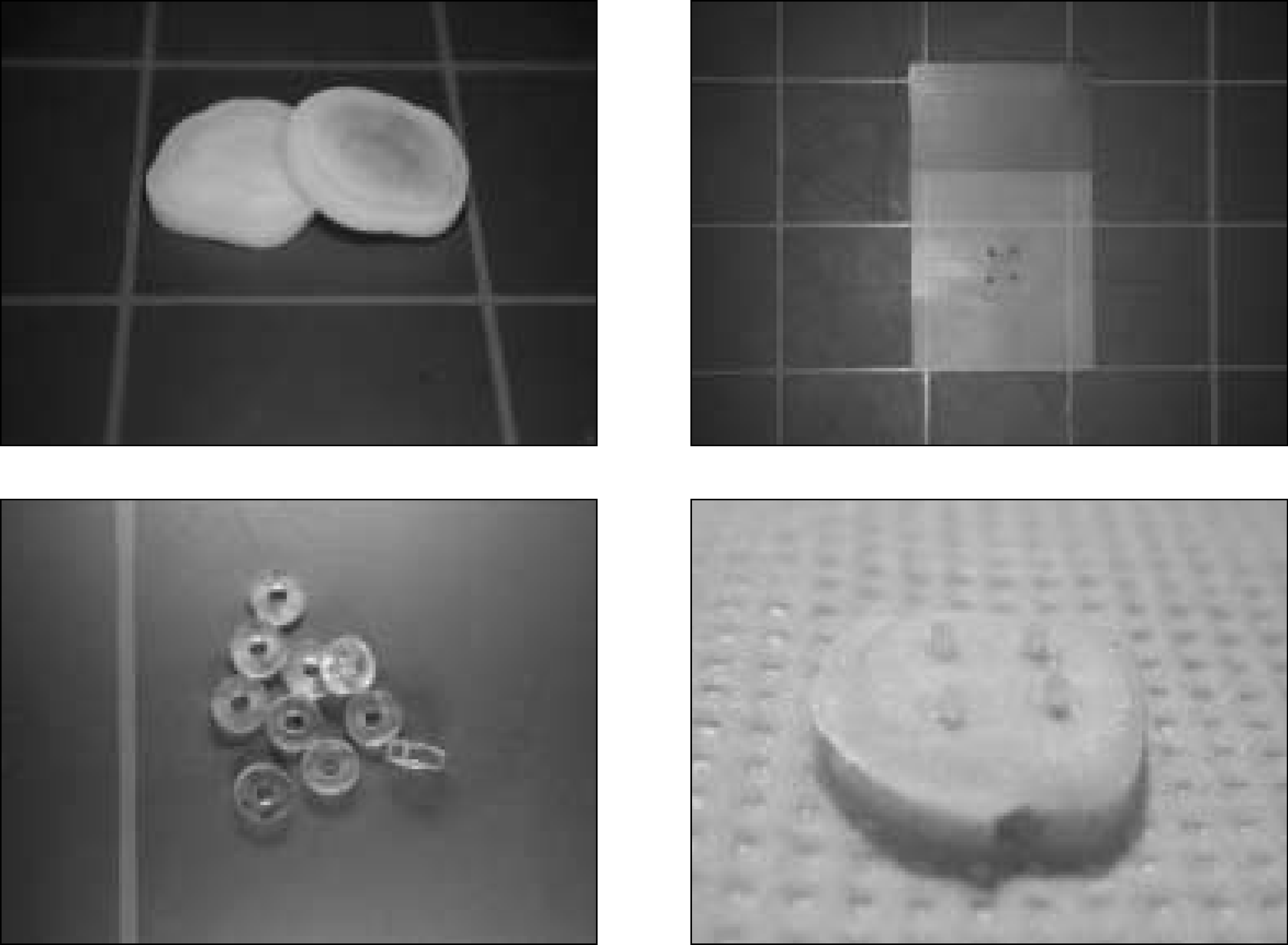
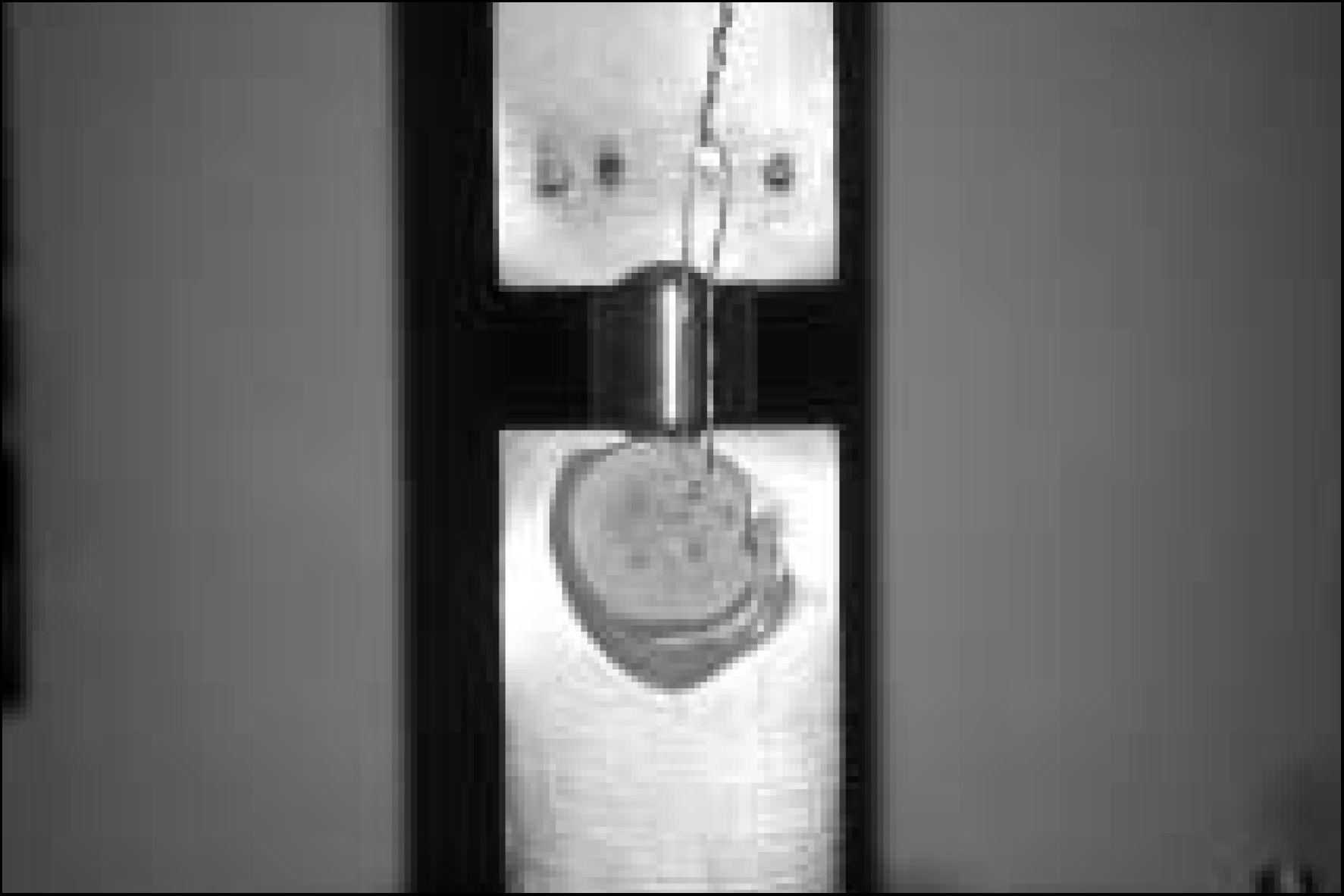
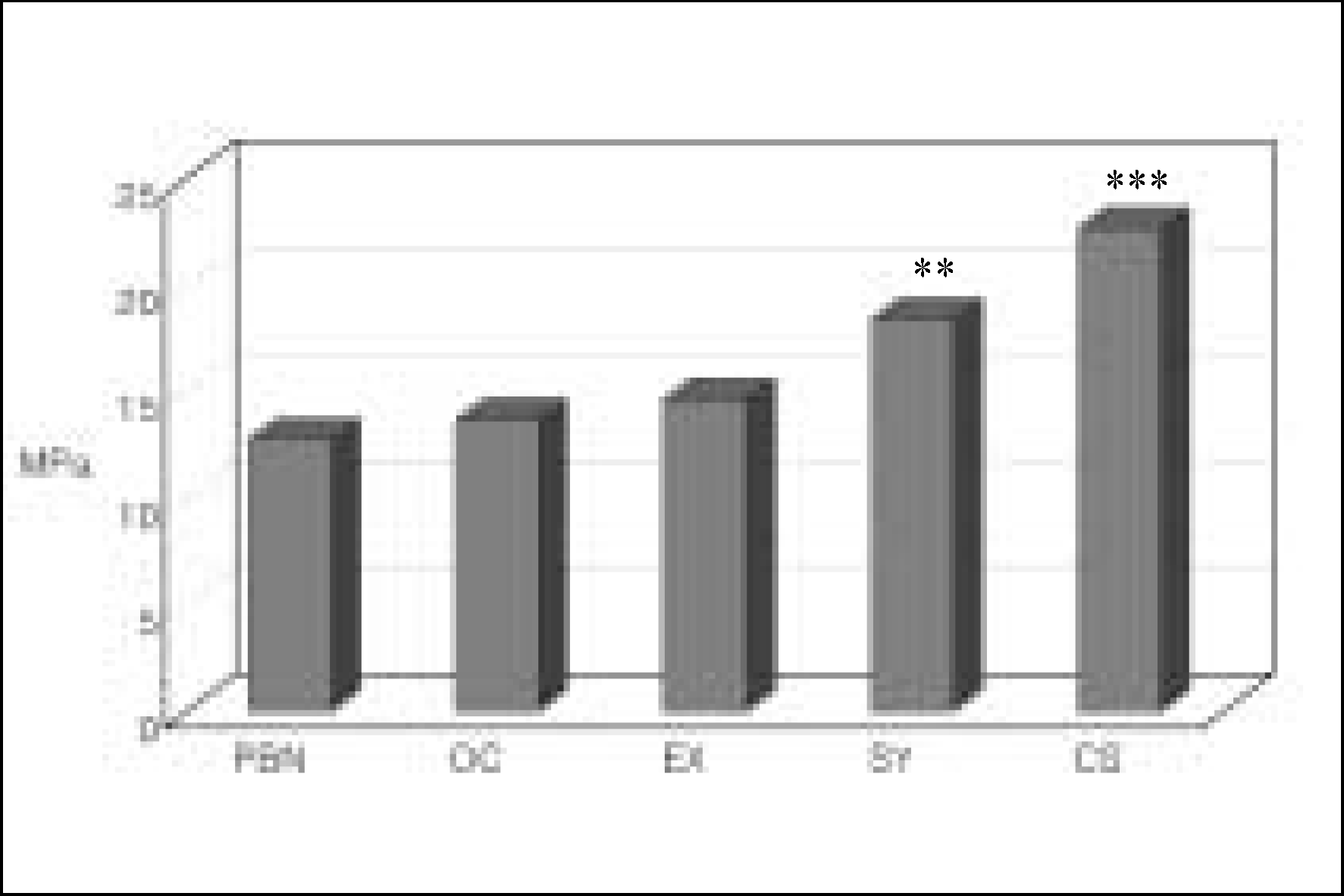
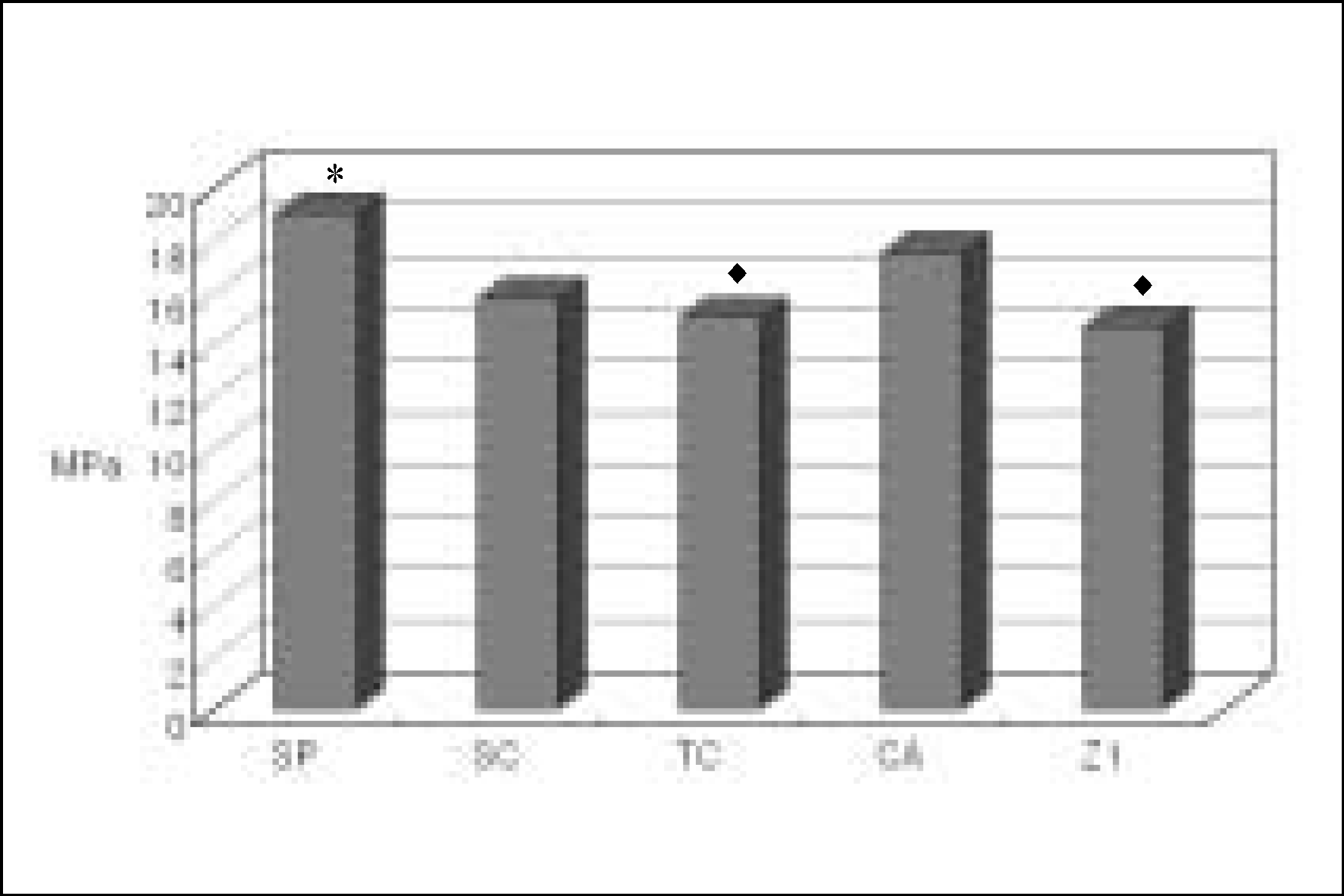
 XML Download
XML Download